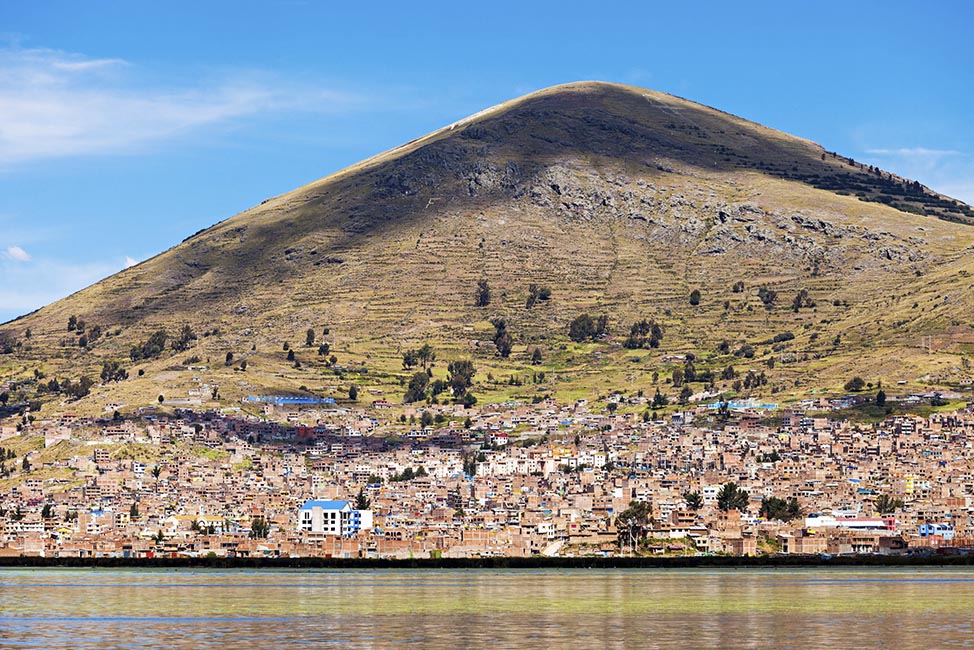



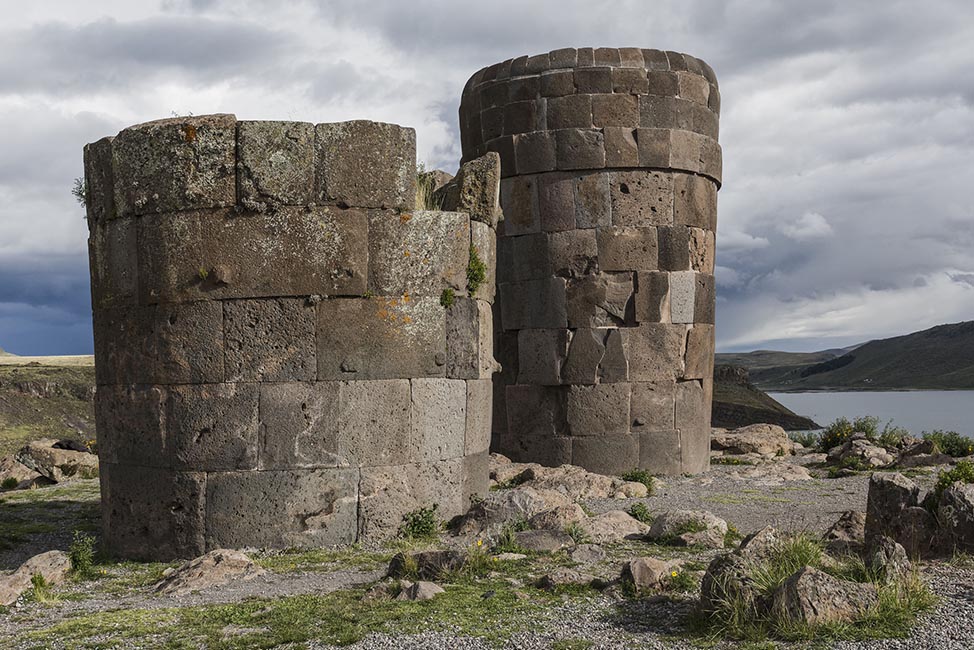
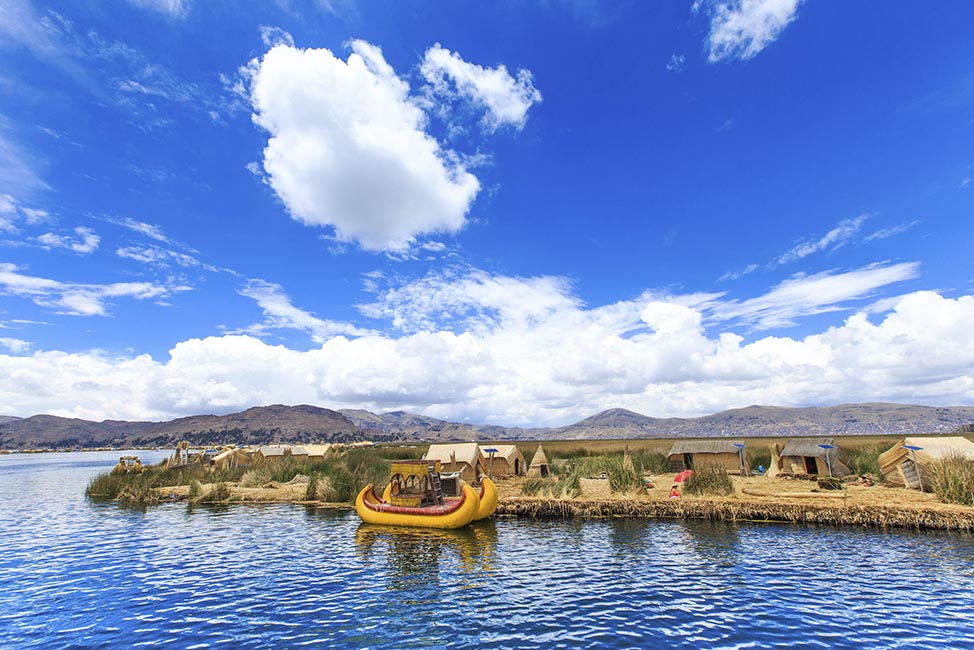
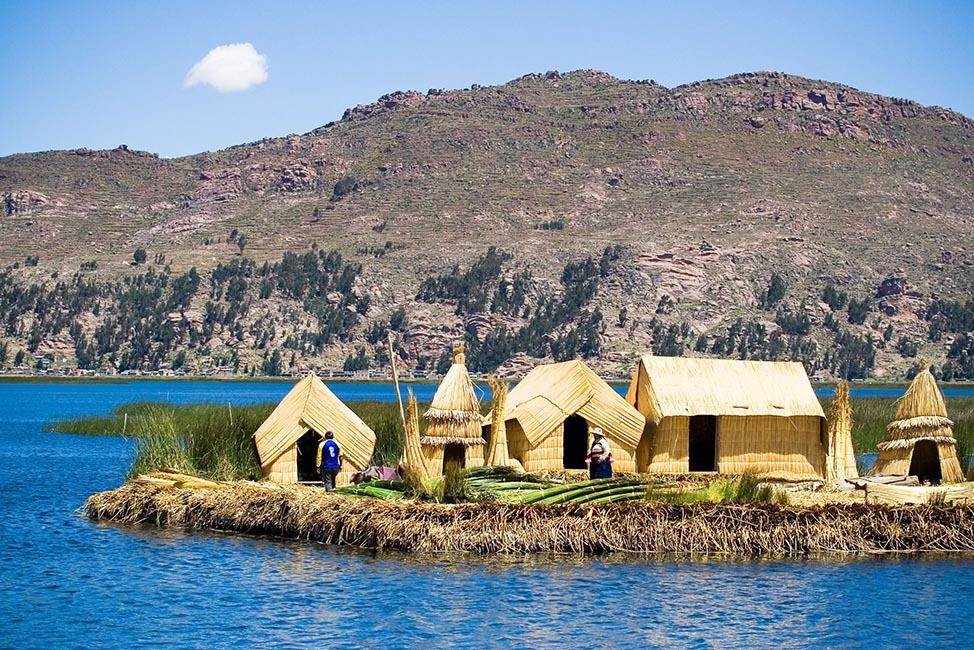
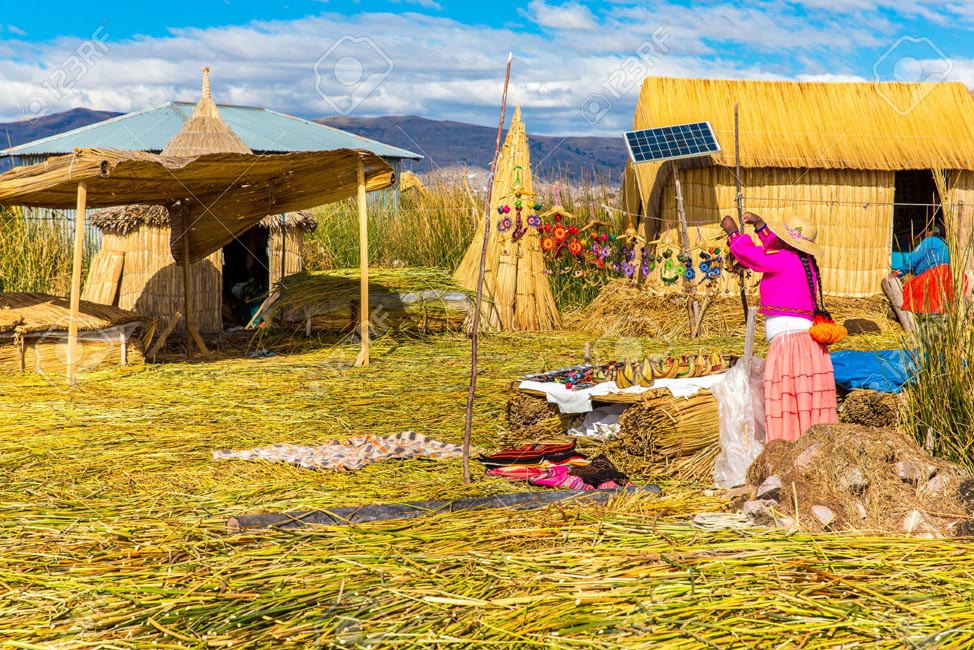
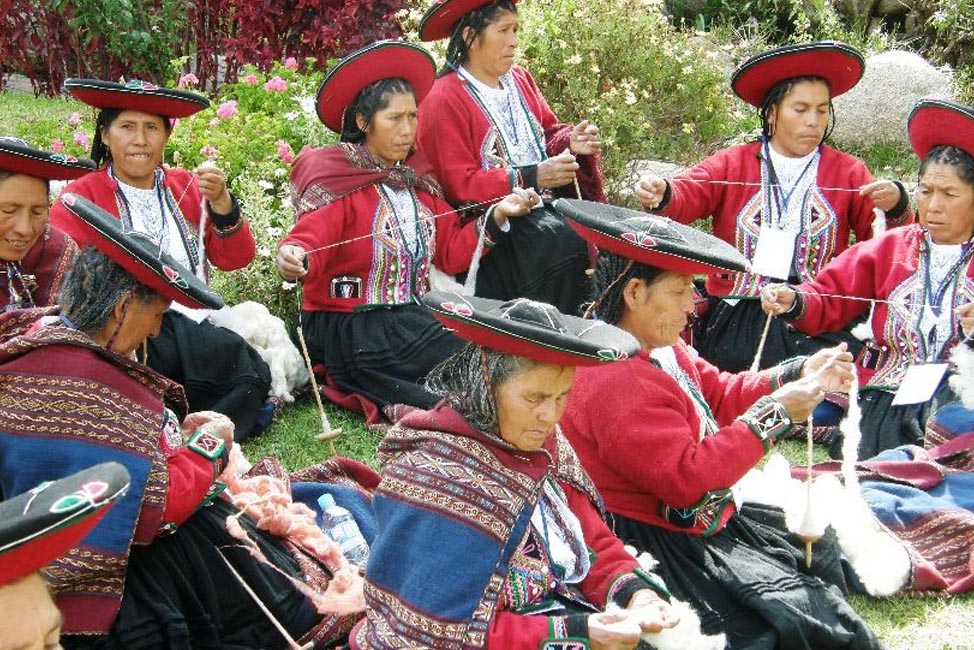


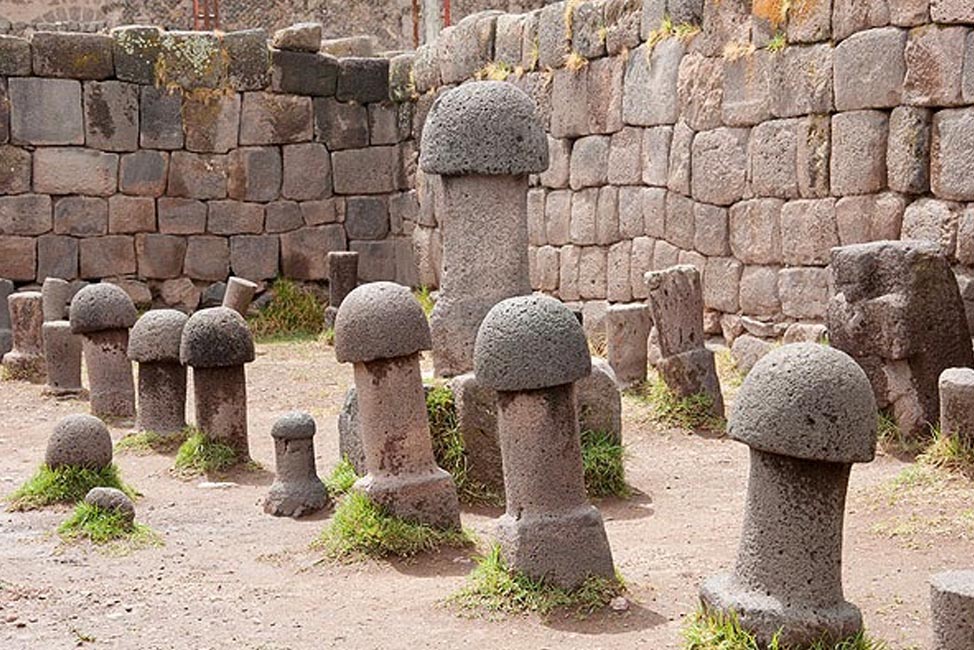
The department of Puno is embedded in the extensive plain of the Collao, on the shores of Lake Titicaca, at a height of 3800 AMSL. The inhabitants of that region arrived between 10,000 BC and 12,000 BC. There were three cultures that populated the region: Puquinas (Tiahuanacos), Aymaras and Quechuas. The Puquinas disappeared, while the Aymaras and Quechua still live there.
The landscape of the city is severe, and its houses with gray roofs, accentuate their austere appearance. But the real wealth of the area lies in the natural beauty that surrounds the city, where the beautiful waters of Titicaca decorated with its floating islands, the Tinajani Tower with its immense stones that give it the appearance of a city and the ancient Prehistoric monuments like the chullpas of Sillustani captivate the tourists.
In addition, Puno is the folkloric capital of Peru for the variety and beauty of its music and its dances; Has more than 300 different dances, among which stand out the diablada, morenada, llamerada, marinera puneña and the gang puneña.
If you visit Puno in the first half of February you will be able to appreciate the many cultural and festive activities in homage to the Virgen de la Candelaria.